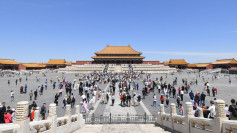The report on economic growth in China has once again frustrated shareholders.
The third-quarter gross domestic product growth of the world's second-largest economy, 6 percent year-over-year, representing the slowest pace after the first quarter of 1992.
The country's economic growth rate also lagged from expectations of 6.1 percent, per a Reuters' poll. The measure compares unfavorably with the 6.2 percent rise of the second quarter and corresponds with the Chinese administration's low end.
Trade war conflicts with the U.S. have been detrimental to the economy of China. In January-September 2019, China's shipments to the U.S. fell 10.7 percent year-over-year in dollar terms.
Moreover, over the year, Chinese exports from the U.S. contracted 26.4 percent. In comparison, China's trade surplus with the United States in September was $25.88 billion, relative to $26.96 billion in August.
Ultimately, the September export data from China were way off forecasts of analysts. In September, Chinese exports dropped 3.2 percent year-over-year compared to analysts ' expectations of a 3 percent decline, based on a poll conducted by Reuters.
The fall in demand due to declining global economic growth, trade conflicts and the effects of "front-loading" could have exacerbated the decline in export prices. Meanwhile, in September, China's export rates fell year-over-year by 8.5 percent relative with analysts ' forecasts of a 5.2 percent fall.
In some major components of the economy, such as freight exports, factory power generation, jobs, and entertainment consumption, declining domestic and global economies have contributed to sluggishness. In reality, in three years, factory gate prices had decreased the quickest.
The frustration can also be responsible for raising investment rates. Fixed-asset contributions in the nation grew by 5.4 percent from January-September, a relative with 5.5 billion in the first eight months.
In addition, fixed-asset investment in the private sector was also disappointing, slowing from 4.9 percent in January-August to 4.7 percent in the first nine months.
The industrial output of China grew by 5.8 percent in September, beating the expectations of analysts by 5 percent. In contrast, a rise in domestic demand has culminated in industrial output, which has seen new domestic orders in food processing, textiles, and electrical machinery.
Retail sales for September grew by 7.8 percent year-over-year, in accordance with predictions. The measure further supported August's 7.5 percent increase in retail sales.
An increase in new construction activity has culminated in a greater investment in China's assets in September. There has been a decline in real estate transactions, the latest figures showed.






